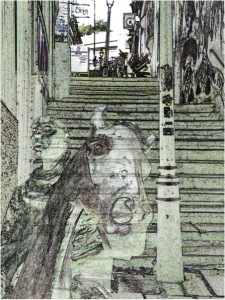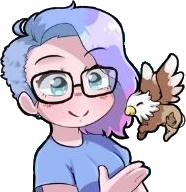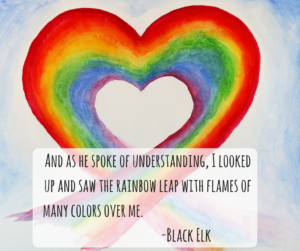
North by Southwest is an anthology by ten writers. The tales are mainly set in Bristol and are an eclectic and unlikely series of journeys through landscape and story. These are all new stories, never before published, and show great variety. Here lies the strength of the book, showcasing as it does the work of the writers after a year or so of collaboration.
Bristol is a vibrant, creative city and the tales here are infused with that energy. Bristol has had such a great effect on transport through the ages ““ it’s an airplane city, a railway city, and a port city ““ so naturally such themes recur, as does the theme of “˜North’.
In February 2014, at a North Bristol Writers meeting I said, “We should write an anthology!” which was greeted by enthusiasm by all present. Writing the stories was the “˜easy’ part; how would we get it published?
A few friends had run successful Kickstarters and we toyed with the idea of crowdfunding but weren’t sure how to start. Then I had a chance meeting at a reading evening (the much missed Small Stories) with another writer ““ Amy Morse http://www.amymorse.co.uk/ who had just successfully funded her novel Solomon’s Secrets via a funding platform I’d not heard of ““ Fundsurfer, which is a Bristol based crowdfunding platform, very similar to Indiegogo and Kickstarter. I invited Amy along to a North Bristol Writers meeting to talk about her experience and after her talk we determined to use Fundsurfer. Mainly because Fundsurfer was local and the stories were mostly set locally.

We budgeted for Typesetting, Design, Printing and postage & packing then set up the Fundsurfer page. The most difficult bit was making the video, no-one in the group had any experience of making videos. We recorded a few hours of footage and in the end I only used the audio from it.
We launched the Fundsurfer at the end of October 2014 at BristolCon, who very generously donated several sets of tickets for the 2015 Con that we could use for pledge rewards, and set it to run for until mid-December.
Friends who’d had successful crowdfunding campaigns gave some great advice. The best piece of advice was “build the crowd, then the funding” so we had spent a while telling everyone we could think of that the book existed and needed funding. So that when we launched the Fundsurfer campaign a lot of people already knew about it.
I’ve mentioned a couple of rewards already and obviously the rewards and the levels are key to the success of the project. We started with a long list of about fifteen rewards but with the advice of “˜less is more’ from the Fundsurfer guys we whittled them down to seven. Apparently it’s like the way people choose wine, some will go for the bargain basement (but in fact we had very few go for the lowest reward level) some will go for the mid-range and some will go for the top range. The majority of people will go for the mid-range. So having a range of rewards is more important than having a variety of awards. We budgeted for a certain number of physical copies and worked out the likely number for P&P. P&P kills many crowdfunding campaigns & is something you need to give careful consideration to!
We got some nice publicity from Bristol 24/7 and a very entertaining “˜celebrity endorsement’ from local writer Jonathan L. Howard.
With 10 writers, an editor and an artist involved we thought that funding would work out if we could all get a few friends & family to pledge. It was still a nailbiting few weeks as the project slowly accumulated the funds; slower than I would have liked. We reached our funding goals a few days before the project was due to end and got pretty much what we asked for, getting just £62 over our goal.
Often it felt like all those times in school when you tried to get money out of people for doing a sponsored walk, or similar. We mainly sold it as a pre-order for the book, but potentially didn’t set expectations well enough, that once we had the funding the process of getting the book published would begin, and as we all know, everything in publishing takes a lot longer than you think. However the actual process has been very smooth, thanks to Tangent. All the funders have now received their eBook and the print book is imminent. We are looking to have a local launch and have started planning our next anthology.
Would I crowdfund again? It’s a very viable way to fund a project but it does rely totally on people’s goodwill and it is a lot of hard work. The amount of people who will “get round to it” is very large and there is an inevitable amount of nagging, which I didn’t like at all. However we were successful and it was the most equitable way of creating the book.
 Bio: Pete Sutton is a UK writer and blogger, one of the organisers of Bristol Festival of Literature and contributing editor to Far Horizons magazine . He is a contributor to the Naked Guide to Bristol and you can read his latest published story ““ The body in the lake in Fossil Lake 2 published by Sabledrake Enterprises.
Bio: Pete Sutton is a UK writer and blogger, one of the organisers of Bristol Festival of Literature and contributing editor to Far Horizons magazine . He is a contributor to the Naked Guide to Bristol and you can read his latest published story ““ The body in the lake in Fossil Lake 2 published by Sabledrake Enterprises.
Follow him on Twitter as @Suttope and read his blog here: http://brsbkblog.blogspot.co.uk/ & his website here: http://petewsutton.com/.
Want to write your own guest post? Here’s the guidelines.
#sfwapro
Enjoy this writing advice and want more content like it? Check out the classes Cat gives via the Rambo Academy for Wayward Writers, which offers both on-demand and live online writing classes for fantasy and science fiction writers from Cat and other authors, including Ann Leckie, Seanan McGuire, Fran Wilde and other talents! All classes include three free slots.






 Treading the waters of diversity is tricky because we never want to disrespect the struggles that women, people of color, the LGBTQ community, or others have had to endure. As writers, we often want to include people like this in our stories because their stories are powerful and can make a difference. This sometimes manifests itself as ‘the gay friend’ or ‘the black friend’ or if you’re really batting for a home run ‘the gay black friend’. This character is great for diversity. He shows that those people exist and that we shouldn’t be afraid of them. But over time, if we see the gay black friend over and over it creates a subliminal message that all gay black men behave a certain way, and that can damage the community. I think we should allow those characters to break the mold and keep it to themselves.
Treading the waters of diversity is tricky because we never want to disrespect the struggles that women, people of color, the LGBTQ community, or others have had to endure. As writers, we often want to include people like this in our stories because their stories are powerful and can make a difference. This sometimes manifests itself as ‘the gay friend’ or ‘the black friend’ or if you’re really batting for a home run ‘the gay black friend’. This character is great for diversity. He shows that those people exist and that we shouldn’t be afraid of them. But over time, if we see the gay black friend over and over it creates a subliminal message that all gay black men behave a certain way, and that can damage the community. I think we should allow those characters to break the mold and keep it to themselves.

2 Responses
Cat Rambo: Guest Post from Pete Sutton: On Crowdfunding North by Southwest http://t.co/tK4dDxeUk3
RT @Catrambo: Guest Post from Pete Sutton: On Crowdfunding North by Southwest http://t.co/nzzbjyC9Nb